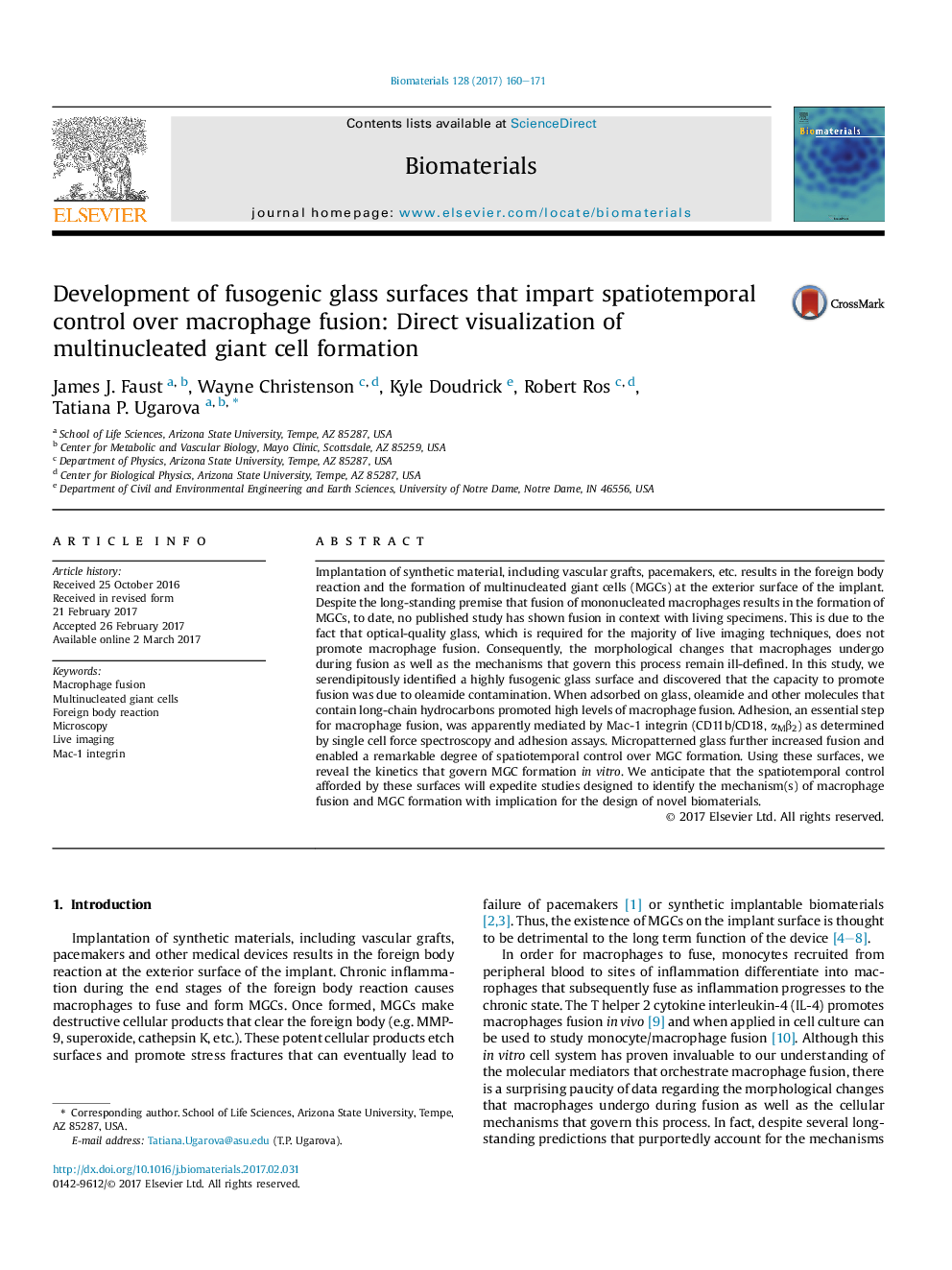| کد مقاله | کد نشریه | سال انتشار | مقاله انگلیسی | نسخه تمام متن |
|---|---|---|---|---|
| 4752399 | 1416139 | 2017 | 12 صفحه PDF | دانلود رایگان |
Implantation of synthetic material, including vascular grafts, pacemakers, etc. results in the foreign body reaction and the formation of multinucleated giant cells (MGCs) at the exterior surface of the implant. Despite the long-standing premise that fusion of mononucleated macrophages results in the formation of MGCs, to date, no published study has shown fusion in context with living specimens. This is due to the fact that optical-quality glass, which is required for the majority of live imaging techniques, does not promote macrophage fusion. Consequently, the morphological changes that macrophages undergo during fusion as well as the mechanisms that govern this process remain ill-defined. In this study, we serendipitously identified a highly fusogenic glass surface and discovered that the capacity to promote fusion was due to oleamide contamination. When adsorbed on glass, oleamide and other molecules that contain long-chain hydrocarbons promoted high levels of macrophage fusion. Adhesion, an essential step for macrophage fusion, was apparently mediated by Mac-1 integrin (CD11b/CD18, αMβ2) as determined by single cell force spectroscopy and adhesion assays. Micropatterned glass further increased fusion and enabled a remarkable degree of spatiotemporal control over MGC formation. Using these surfaces, we reveal the kinetics that govern MGC formation in vitro. We anticipate that the spatiotemporal control afforded by these surfaces will expedite studies designed to identify the mechanism(s) of macrophage fusion and MGC formation with implication for the design of novel biomaterials.
Journal: Biomaterials - Volume 128, June 2017, Pages 160-171
